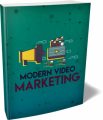Salespage Snapshot:

Table of Contents
Introduction………6
Stats and Figures……….7
What You Will Learn in This Book ……8
Chapter 1: The History of Facebook and Live Streaming……….10
What is Live Streaming and Why Does it Matter? ..10
The History of Live Streaming So Far……….12
The History of Facebook so Far …….13
Acquisitions, Development and Live Streaming .15
Chapter 2: Facebook Live – What You Need to Know to Get Started .16
How to Use Facebook Live….18
What Marketers Need to Know………24
Chapter 3: Advanced Features and Tips….26
Editing Video….26
Viewing the Live Map..28
Chapter 4: Facebook Live vs Periscope vs Meerkat …….32
The Advantages of Facebook Live …33
Features and Specs….36
The Odd One Out: ‘Blab’ …37
Chapter 5: Ideas for Content .38
Sharing Exciting Moments …..38
Vlogging39
More Great Formats for Streams……40
Top Tips ……40
Reviews…….41
AMAs41
Interviews ….41
Discussion …41
Tours 41
Chapter 6: How to Create Engaging Live Videos .42
How to Create Professional Videos ..43
Professional Content ..44
Chapter 7: How to Build Your Following and Get More Viewers! ……..45
Facebook Marketing Done Right ……46
Using Facebook Ads…48
Chapter 8: How to Monetize Facebook Live ………50
A Simple Sample Business Model ……….51
Chapter 9: Top Tips for Facebook Live Success .53
Tell people when you’re going to broadcast 54
Wait for a strong connection..54
Write a compelling description……….54
Invite users to follow …55
Experiment with length ……….55
Go live often and experiment.56
Chapter 10: The Future of Live Streaming.57
Conclusion & Summary ………61
Sample Content Preview
Chapter 1: The History of Facebook and Live
Streaming
As mentioned in the introduction, live streaming is very big news for the web and is something that many speculators are watching very closely right now. But where did live streaming come from? What precisely is it? And why is Facebook getting involved?
Before we dive into the nitty gritty and discuss how to get started and how to create content, let’s rewind a little and go over some of the history of live streaming and of Facebook so that you can get to grips with the lay of the land…
What is Live Streaming and Why Does it Matter?
As the name suggests, ‘live streaming’ means that you’re filming videos and streaming them live. So instead of creating content using a camera, editing it and then uploading it to YouTube, you are instead filming and streaming directly. This is raw footage, broadcast live and it’s incredibly exciting.
Normally, live streaming will take place via an app. To do this, you simply need to install the specific app on your smartphone (which will normally be either Meerkat or Periscope) and then you’ll hit the stream button. You may also set up some details about the nature of the video – giving it a name, a picture and/or a simple description.
From there, you then record with the camera in your phone and anyone can watch from around the world who is signed in, or who sees you Tweet that you’re going live. There are also plugins for your website (if you use WordPress) that allow people to see if you’re live and then tune in to watch if they so desire.
So what is it about this type of content that makes it so unique and so effective?
Well many people have described it as the closest thing to teleporting. If you load up Periscope for instance, then you can view a map showing where all the feeds are coming from and then simply select which one you would like to view. This is quite a surreal experience, as you will then be transported into a person’s room, or even to a concert. You can now see the world through their eyes, as it is happening. Imagine being able to watch concerts live, comedy acts or parties that you were unable to attend! And imagine how this could impact world events once this form of content really takes off! Imagine if there was a tsunami or a hurricane and if you could then view the events unfold from multiple points of view all around the world all at once. It would almost be like being omnipresent during that event!
For marketers this is also huge. There is something that viewers find remarkably exciting about watching something live and this also gives them the ability to ask questions, have discussion and get feedback live.
Imagine reviewing a product that you created during a live feed. You could build a huge audience and at the same time answer questions that show up and even show off other aspects of the product that you might otherwise have glossed over.
Many marketers are also doing regular live streams: having live discussions with their viewers over their morning cup of coffee. This allows an unprecedented level of intimacy that can help you to build a much closer relationship with your audience and create much more engagement. These are the reasons that people are excited about live content online – and there are many other potential applications and uses for this type of content. Imagine being able to view a restaurant live, right in that moment before you book a table. Or imagine being able to see behind the scenes while your favorite TV show is being filmed.
The History of Live Streaming So Far
Before Facebook’s involvement, most people thought of Periscope as being the major player in the live streaming stakes. Actually though, it was Meerkat that was the very first to market and that really kicked things off. And back then, no one had heard of Periscope, which make Meerkat definitely a very exciting piece of news for pundits.
Meerkat was drawing a lot of attention very quickly then when it was first announced in March 2015. From then, it managed to create an increasing amount of buzz and gather a flurry of media attention. Ironically, Meerkat also worked very closely alongside Twitter, which really helped to give it a boost. Back then, Meerkat was known as ‘AIR’ and later on ‘Yevvo’.
But soon Twitter would decide that simply supporting Meerkat wasn’t enough. The hype surrounding live streaming was clear and so the company needed its own offering. Thus they bought the smaller and much lesser known Periscope for a nice sum of $100 million. Very quickly, Periscope rose to prominence with Twitter behind it.
Periscope very quickly proved that there is a huge audience and massive potential for this type of content and that’s no doubt what piqued the interest of Facebook – the ‘other’ massive social media network.
The History of Facebook so Far
That’s the history of live streaming up to the point of Facebook’s involvement. But how about the history of Facebook itself? Most people know a little about the history of Facebook thanks to the successful movie The Social Network. Despite being a good film though, many of the facts presented are inaccurate and the story is only loosely based on the real events.
As shown in the film, Facebook was the brain child of Mark Zuckerberg who was studying at Harvard at the time. Also as shown in the film, Mark had previously experienced some success and controversy after creating ‘Face Mash’.
In the film, Mark is shown as being socially awkward and as using Facebook as a means to try and enter college clubs and attract women. In fact though, Mark was already dating his now-wife Priscilla Chan at the time he came up with the social network! Also somewhat accurate is the depiction of Mark’s partnership with roommate and colleague Eduardo Saverin. It’s also true that Mark faced legal charges from the Winklevoss twins and their friend Divya Narenda.
However, it’s also very unlikely that Mark really took inspiration from the trio when creating Facebook. In fact, it was public knowledge at the time that Harvard was working on their own social network but that they were taking a long time to complete the project. Mark discussed this openly with the Harvard Crimson and it appears more likely that this was the competition he was more focussed on:
“It is clear that the technology needed to create a centralized Website is readily available … the benefits are many.
“Everyone’s been talking a lot about a universal face book within Harvard. I think it’s kind of silly that it would take the University a couple of years to get around to it as I can do it better than they can, and I can do it in a week.” After creating ‘The Facebook’ in blue (owing to Mark’s color-blindness) he put it on the Kirkland House online mailing list, which had 300 subscribers. By the end of the first night, the site already had between 1,200-1,500 new members.
Initially, Facebook was only available to Harvard students but gradually it would be rolled out across other colleges and then eventually certain businesses and schools before being opened to the public. This gradually roll-out really helped the site to pick up steam in those early days. In 2004, Facebook expanded to include Stanford, Columbia and Yale and from there it continued to grow.
Over the years that followed, Facebook would go on to add many new additional features that today are considered a core part of the platform. For instance, it wasn’t until 2006 that the company introduced its ‘News Feed’ that initially received some backlash.
And it wasn’t until 2010 that we saw the introduction of a ‘Like’ button. This was also the year that Facebook Messages were introduced.
Other Details- 20 Articles (TXT, DOC)
- 1 Ebook (PDF), 63 Pages
- 2 Graphics (JPG, GIF, PNG)
- 1 Salespage (HTML)
- Social Media Images, Email Swipes, Optin Page, Mindmap, Resource Cheat Sheet, Checklist,
- Year Released/Circulated: 2016
- File Size: 19,751 KB
License Details:
1. You’re granted master resell rights, resell rights or to resell with personal use rights.
2. You may add this product to your PAID membership site.
3. You may giveaway the product as a bonus when people buy through your affiliate link.
4. You may edit the included sales page and opt-in page.
5. No, you may NOT edit the contents of the eBook(s).
6. No, this product does NOT include private label rights. You are granted Master Resell Rights only.
7. No, you may NOT giveaway the main eBook for free.
If you disagree to these terms, please refrain from reselling this product.














